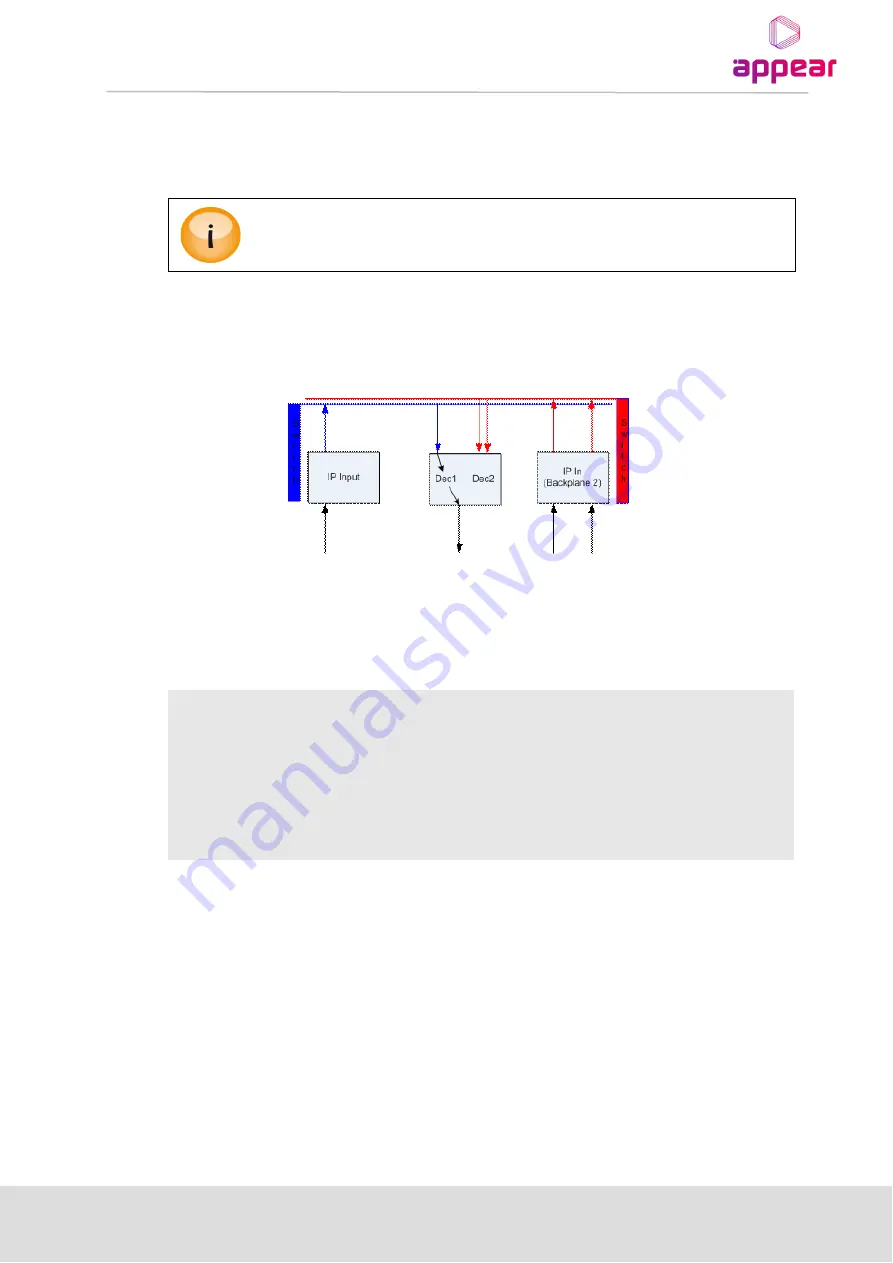
APPEAR AS
Confidential
306/352
When both channels are configured with a service, the decoder card will switch if both Channel A and Channel B
meet the switch criteria. If just one channel is configured, then the decoder will switch if that channel (A or B)
meets the switch criteria. There will be only one alarm when the decoder switches (not two alarms from both
channels).
To switch decoders, internal redundancy must be enabled. Removing inputs from the GUI
will not cause the decoder cards to switch.
Example When Switching does not occur
When you remove the inputs, i.e., you remove the configuration of the input streams you have a system with the
following configuration.
This causes the input card to no longer subscribe to the multicast input, thus telling the system not to configure
the decoder. Consequently, a decoder without a configuration will not try to switch, as nothing is wrong.
Decoder Switch Alarms
The table below lists the alarms displayed as a result of the switch:
Switched, reason: link down
Refers to internal link failure
Switched, reason: logout
The decoder module is logged out from the input module that hosts
the MMI
Switched, reason: alarm
The alarm refers to input stream failure having caused the switch
Switched, reason: operator
The alarm refers to the operator having performed a manual switch
There is a delay of 15 seconds before the alarm appears.
12.2.5
QAM/COFDM/IP/ASI
O
UTPUT
I
NTERNAL
R
EDUNDANCY
When using QAM,COFDM , IP or ASI Output with internal redundancy the switching will be triggered with the
following alarms/events:
•
No signal
•
No contact with MMI module
If
all
services configured for the output card stop receiving data, the
No Signal
alarm will be raised and the
internal redundancy module will switch backplanes. This means that even if the services configured are not
enabled to the output signal of the card, it will switch.
















































